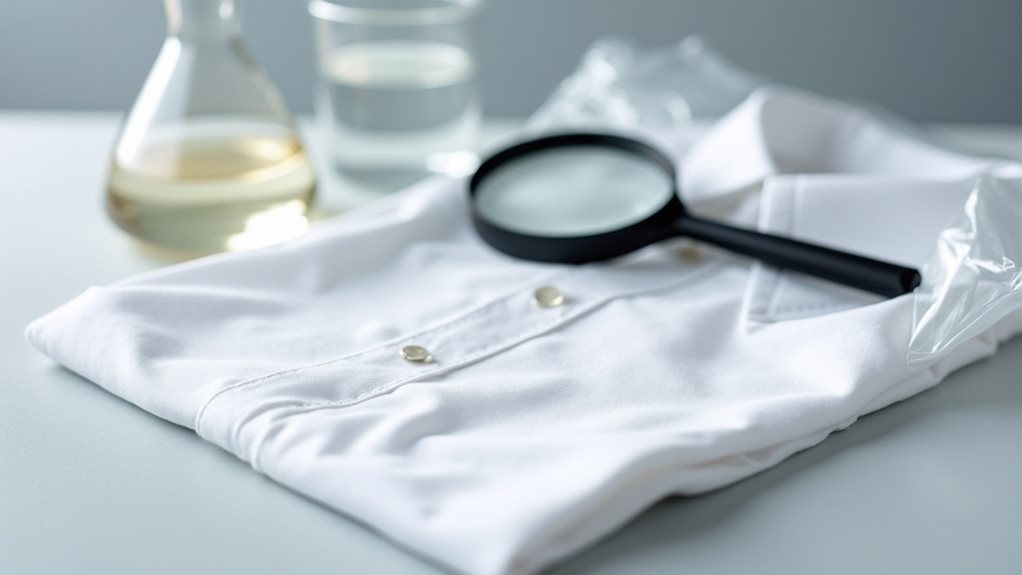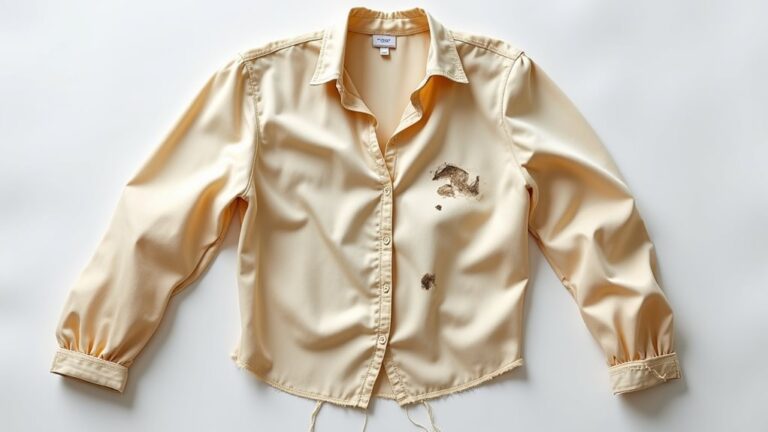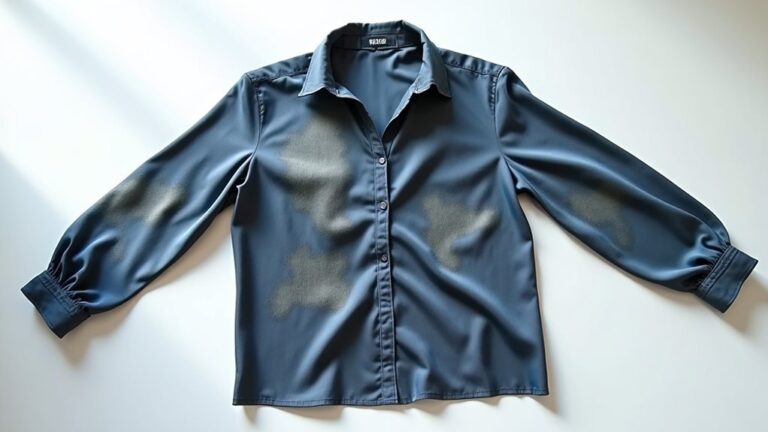Yes, dry cleaning really does clean your clothes, though it works differently than your home washing machine by using chemical solvents like perchloroethylene instead of water and detergent. You’ll find it’s actually more effective at removing oil-based stains like grease, makeup, and tar that regular washing can’t tackle, while also preserving delicate fabrics like silk and wool that water would damage. Understanding exactly when and how to use this specialized service will transform your garment care routine.
What Is Dry Cleaning and How Does It Work?
The mystery of dry cleaning has puzzled me since I first watched my father carefully wrap his best suit in plastic, treating it like some precious artifact that couldn’t survive a regular washing machine.
You’ve probably wondered the same thing—how does this magical cleaning method actually work?
Here’s the straightforward truth: the dry cleaning process uses liquid solvent, primarily perchloroethylene, instead of water to tackle stubborn stains on delicate fabrics.
Your clothes get tagged, inspected, pre-treated, then gently agitated in solvent-filled machines that dissolve oil-based stains while preserving fabric integrity.
Despite the “dry” name, garments do get wet—the solvents just evaporate quickly afterward, making this cleaning method particularly effective for materials that would shrink or get damaged in traditional water-based washing.
Many dry cleaners now offer eco-friendly alternatives like hydrocarbon or silicone-based solvents as safer options to traditional perchloroethylene.
The Science Behind Dry Cleaning Solvents
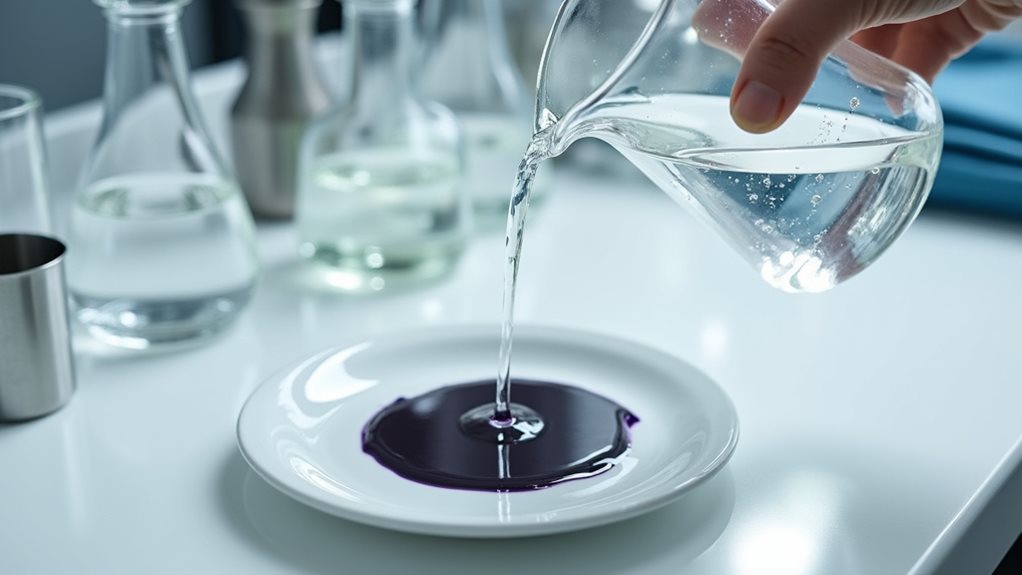
While I used to think dry cleaning was some kind of mysterious alchemy—like turning lead into gold, but with stains—the actual science behind those powerful solvents is surprisingly straightforward once you peek behind the curtain.
These dry cleaning solvents work because they’re masters at dissolving oil-based stains that water simply can’t touch, making them perfect for your delicate fabrics that would shrink or get damaged in a regular wash.
The gentle agitation process lets the solvent penetrate deep into fibers, lifting away grease and grime without the harsh beating that water-based methods require.
The most common solvent used in professional dry cleaning is perchloroethylene, though many cleaners are transitioning to more environmentally friendly alternatives.
Though newer alternatives focus on reducing environmental impact, this cleaning method remains incredibly effective for preserving your most treasured garments.
Comparing Dry Cleaning to Traditional Water-Based Washing
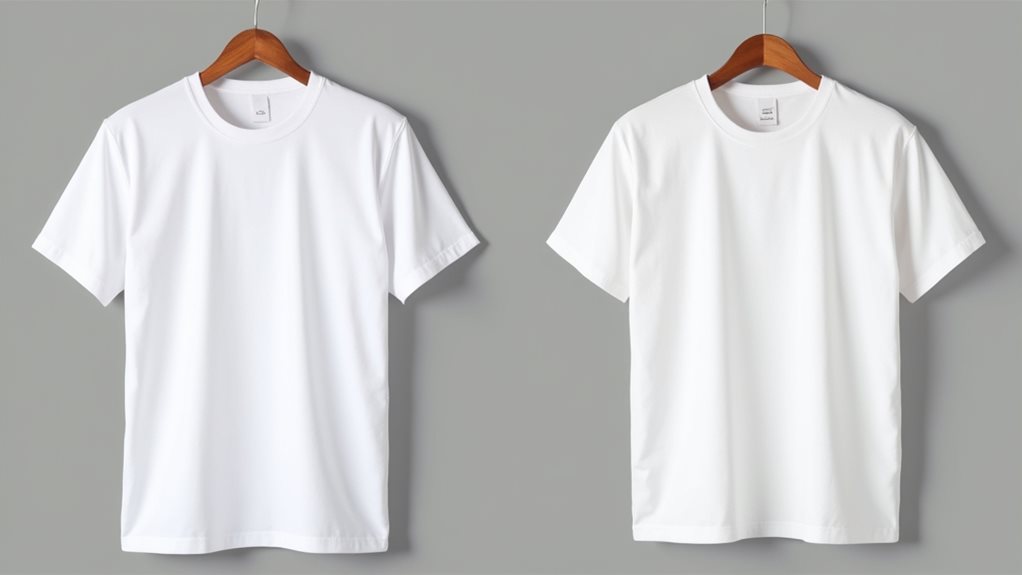
When you’re staring at that coffee-stained silk blouse and wondering whether to toss it in your washing machine or make the trek to the dry cleaner, you’re fundamentally choosing between two completely different scientific approaches to getting things clean.
Your home washer relies on water and detergent to lift away dirt, which works beautifully for everyday messes but can be pretty rough on delicate fabrics that weren’t meant to take a sudsy beating.
Dry cleaning, on the other hand, uses chemical solvents instead of water, which means it can tackle greasy stains that would laugh at your regular laundry routine while treating your precious garments like the fragile treasures they are.
The most common solvent used in professional dry cleaning is perchloroethylene, though many cleaners are switching to more environmentally friendly alternatives like hydrocarbon or liquid CO2.
Solvent Vs Water Methods
After years of accidentally shrinking my favorite wool sweater in the washing machine (yes, I’m still bitter about it 😅), I learned firsthand why understanding the fundamental differences between solvent and water-based cleaning methods matters more than you might think.
When you’re cleaning clothes at home, water swells fabric fibers, which can lead to shrinkage and shape distortion, especially with delicate fabrics like wool or silk.
Dry cleaning uses organic solvents like perchloroethylene instead of water, preventing fiber swelling while effectively dissolving oil-based stains that regular detergent can’t tackle.
The solvent method also preserves color integrity, preventing the dye bleeding and fading that water often causes, making it ideal for maintaining your garment’s original appearance and fit.
This process requires specialized equipment and professional expertise to ensure that delicate items maintain their quality and appearance over time.
Stain Removal Effectiveness
Beyond protecting your clothes’ shape and color, the real test of any cleaning method comes down to one simple question: does it actually get the stains out?
Here’s where dry cleaning solvent truly shines, especially when you’re battling stubborn stains from grease, makeup, or that embarrassing salad dressing mishap 😅. While your washing machine struggles with oil-based marks, perchloroethylene dissolves them without breaking a sweat, preserving delicate fabrics in the process.
However, I’ll be honest—water-based stains like coffee spills sometimes need extra attention, though professional pre-treatment usually handles these tricky situations.
The age of the stain, fabric type, and stain composition all affect how successfully dry cleaning can eliminate the mark, making timing and fabric compatibility crucial factors in achieving the best results.
The stain removal effectiveness really depends on what you’re dealing with, but dry cleaning’s specialized approach, combined with expert pre-treatment techniques, generally outperforms your home washing routine for complex garments and challenging stains.
Fabric Preservation Differences
Although stain removal gets most of the spotlight, the real magic of dry cleaning lies in how it treats your fabrics like precious treasures, preserving their integrity in ways that traditional washing simply can’t match.
When you toss your silk blouse into regular washing, those fibers swell and shrink, leaving you with an expensive mistake 😅.
The dry cleaning industry has perfected fabric preservation through specialized dry cleaning machines that avoid water entirely, maintaining the original shape, color vibrancy, and softness of certain fabrics like wool and velvet.
While this method of cleaning isn’t always the most environmentally friendly option, it’s absolutely crucial for delicate materials that would otherwise deteriorate, guaranteeing your investment pieces stay beautiful for years.
The process uses chemical solvents instead of water to lift dirt and stains without causing the fabric damage that occurs when delicate materials are exposed to traditional detergents and agitation.
What Types of Stains and Dirt Does Dry Cleaning Remove?
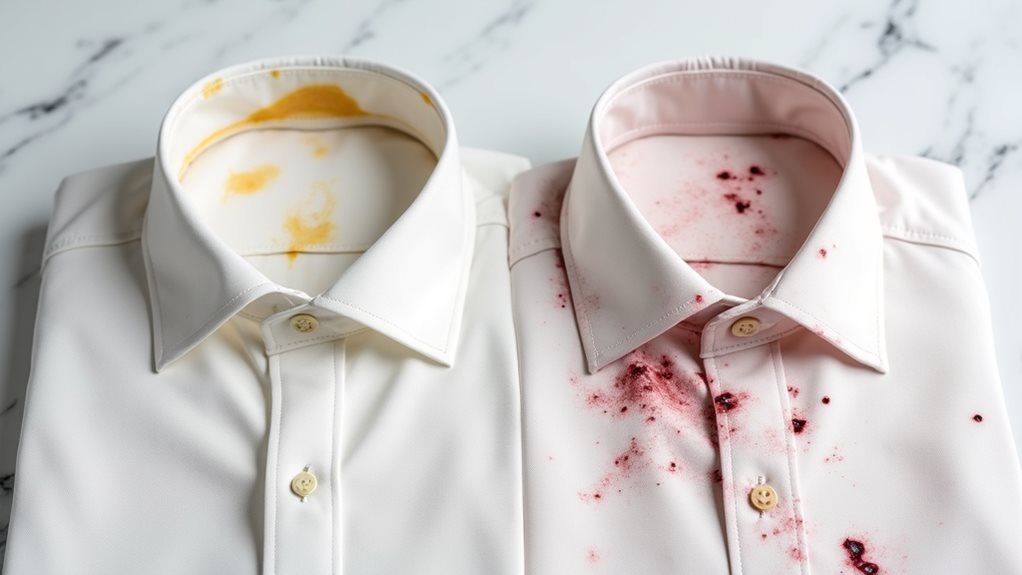
You’ve probably wondered if your dry cleaner can actually tackle that stubborn grease spot from last week’s pizza night, and honestly, they’re surprisingly good at handling oil-based disasters that would laugh in the face of your home washing machine.
While those pesky coffee spills and wine mishaps might seem like water-based washing territory, dry cleaning can actually handle these too, though it sometimes requires a bit more finesse and pre-treatment magic.
The real beauty lies in how dry cleaning’s chemical solvents work differently than water, giving you options when your favorite silk blouse meets an unfortunate encounter with salad dressing 😅.
The process uses specialized solvents like perchloroethylene that dissolve grease and grime without damaging delicate fibers the way water might.
Oil-Based Stain Removal
When it comes to tackling those stubborn, greasy stains that seem to laugh in the face of your regular washing machine, dry cleaning becomes your secret weapon against oil-based culprits.
You know those moments when you’re enjoying a delicious meal and suddenly gravy decides to relocate itself onto your favorite shirt? That’s where dry cleaning’s magic truly shines, because the solvent, typically perchloroethylene, dissolves oil-based stains like grease, tar, and cooking oils without breaking a sweat.
Unlike water-based washing that can actually set these pesky stains deeper into fabric fibers, dry cleaning’s chemical process literally dissolves the oils, lifting them away completely.
Plus, this gentle approach protects your delicate fabrics while preserving those vibrant colors you love so much.
Professional dry cleaners can also effectively tackle makeup stains and protein-based stains like blood or sweat that regular washing struggles to handle.
Water-Soluble Stain Treatment
How does dry cleaning handle those everyday spills like coffee splashes, wine drops, or muddy puddles that seem to find your clothes with uncanny precision?
Here’s where things get interesting – dry cleaning isn’t actually the superhero for water-soluble stains that you might expect. While the organic solvents excel at dissolving grease and oil, they’re not particularly effective against that morning coffee disaster on your silk blouse.
Professional cleaners know this, which is why they often incorporate water-based pre-treatment methods specifically for these stubborn culprits.
The real magic happens during the inspection step, where experienced technicians identify each stain type and apply targeted treatments. This hybrid approach guarantees your delicate fabrics receive proper stain removal without compromising their integrity or structure.
However, success largely depends on the age of stains, as older, set-in marks become significantly more challenging to remove completely, regardless of the cleaning method used.
Fabrics That Benefit Most From Dry Cleaning
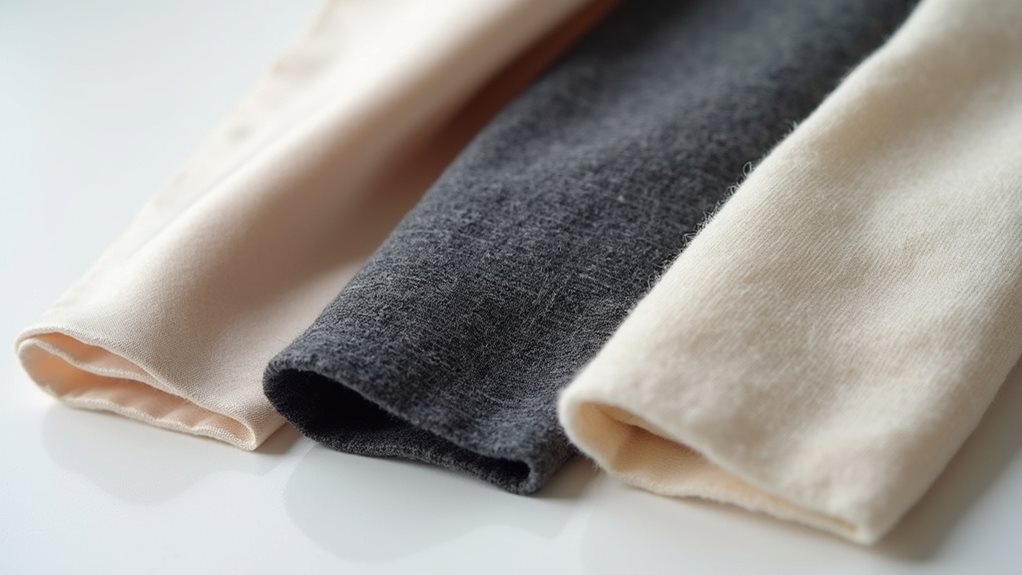
Although water might seem like the universal cleaning solution, certain fabrics actually thrive under the gentle care of dry cleaning solvents, and I’ve learned this lesson the hard way after shrinking my favorite wool sweater in the washing machine 😅.
Fabrics such as silk, wool, and velvet can’t handle water’s aggressive nature, which breaks down their delicate fibers and ruins their luxurious texture.
Water’s harsh treatment destroys delicate fabric fibers, while dry cleaning preserves the luxurious feel of silk, wool, and velvet.
When you’ve got delicate items with sequins, buttons, or intricate lace, a dry cleaning machine treats them like precious cargo, while water washing would turn them into expensive disasters.
Your lined jackets, pleated skirts, and household textiles like curtains and duvets maintain their structure beautifully through dry cleaning, helping preserve their integrity for years to come.
Professional dry cleaners also possess the expertise to handle specific stain types that regular home washing simply cannot address effectively.
Limitations and What Dry Cleaning Cannot Do
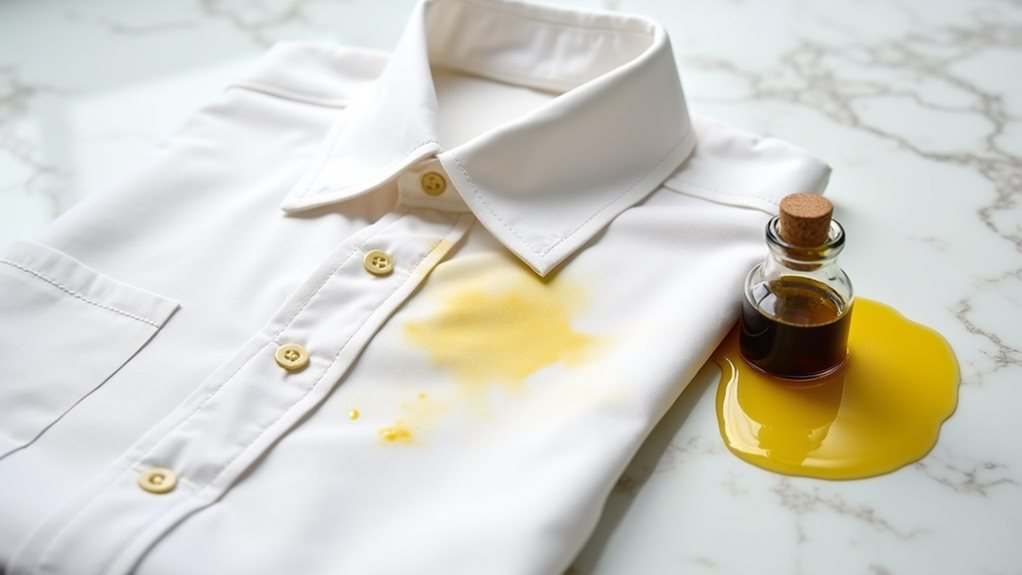
While dry cleaning works wonders for many fabrics and situations, I’ve discovered through some disappointing experiences that it’s not the magical solution I once believed it to be, and understanding its limitations can save you both money and heartbreak.
Even though dry cleaners use powerful solvents, specific stains like coffee, wine, and ink can prove surprisingly stubborn, with some becoming permanent despite professional efforts. I learned this the hard way with a favorite silk blouse! 😅
Additionally, dry cleaning can’t repair previous damage from improper washing or restore faded colors. Items with intricate designs require extra caution, and heavily soiled garments might need wet cleaning instead, so always check care instructions carefully.
Getting Maximum Cleaning Results From Your Dry Cleaner
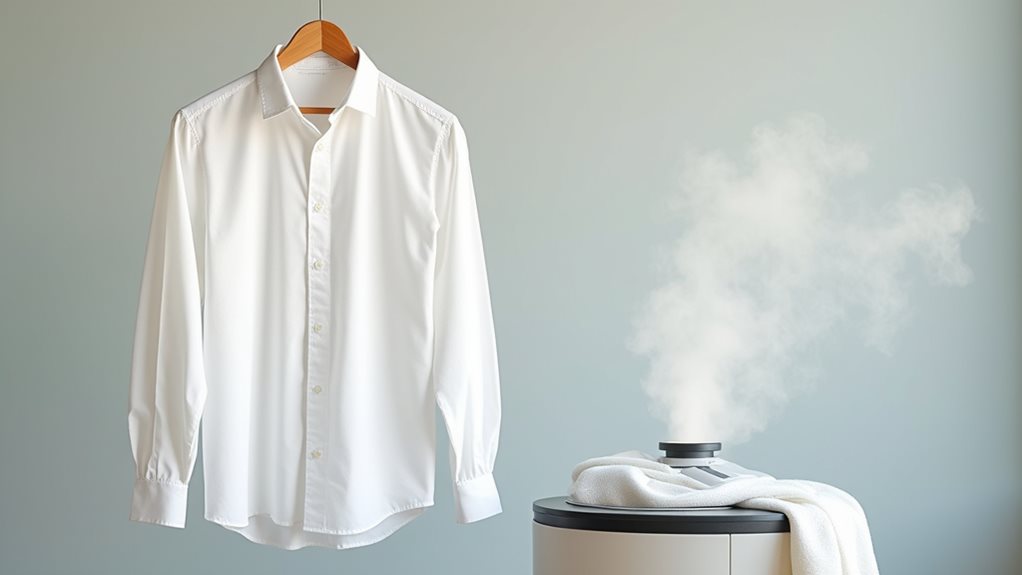
Since discovering that communication is the secret weapon for achieving exceptional dry cleaning results, I’ve learned to treat my relationship with my dry cleaner like a partnership rather than a simple transaction.
You’ll get more effective outcomes when you point out specific stains and explain their origins—coffee spills need different treatment than wine mishaps.
Always check your care label first; those cryptic symbols actually guide whether dry cleaning is necessary.
Those tiny symbols on your garment tags aren’t just decoration—they’re your roadmap to proper care and cleaning decisions.
Request a unique tag number for tracking, because trust me, losing your favorite blazer isn’t fun 😅.
After cleaning, ask for a thorough inspection to verify stains vanished completely.
Don’t skip the finishing touches like pressing and steaming—they transform good cleaning into exceptional results.

